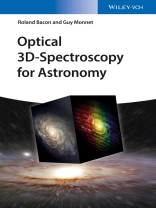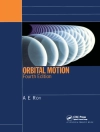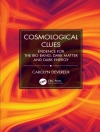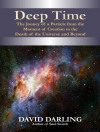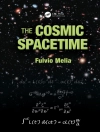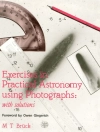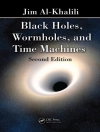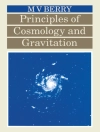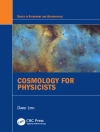Over the last 50 years, a variety of techniques have been developed to add a third dimension to regular imaging, with an extended spectrum associated to every imaging pixel. Dubbed 3D spectroscopy from its data format, it is now widely used in the astrophysical domain, but also inter alia for atmospheric sciences and remote sensing purposes.
This is the first book to comprehensively tackle these new capabilities. It starts with the fundamentals of spectroscopic instruments, in particular their potentials and limits. It then reviews the various known 3D techniques, with particular emphasis on pinpointing their different `ecological? niches. Putative users are finally led through the whole observing process, from observation planning to the extensive ? and crucial – phase of data reduction.
This book overall goal is to give the non-specialist enough hands-on knowledge to learn fast how to properly use and produce meaningful data when using such a 3D capability.
Inhaltsverzeichnis
Foreword xi
Acknowledgments xiii
The Emergence of 3D Spectroscopy in Astronomy 1
Scientific Rationale 1
3D History 4
3D Technology 9
Part I 3D Instrumentation 11
1 The Spectroscopic Toolbox 13
1.1 Introduction 13
1.1.1 Geometrical Optics # 101 13
1.1.2 Etendue Conservation 15
1.2 Basic Spectroscopic Principles 18
1.2.1 The Spectroscopic Case 18
1.3 Scanning Filters 20
1.3.1 Introduction 20
1.3.2 Interference Filters 22
1.3.3 Fabry–Pérot Filter 24
1.4 Dispersers 25
1.4.1 Prisms 25
1.4.2 Grating Principle 27
1.4.3 The Grating Spectrograph 28
1.4.4 Grating Species 29
1.4.5 Grating Etendue 30
1.4.6 Conclusion 31
1.5 2D Detectors 31
1.5.1 Introduction 31
1.5.2 The Photographic Plate 32
1.5.3 2D Optical Detectors 32
1.5.4 2D Infrared Arrays 35
1.5.5 Conclusion 35
1.6 Optics and Coatings 36
1.6.1 Introduction to Optics 36
1.6.2 Optical Computation 37
1.6.3 Optical Fabrication 40
1.6.4 Anti-Reflection Coatings 42
1.6.5 High Reflectivity Coatings 43
1.6.6 Conclusions 44
1.7 Mechanics, Cryogenics and Electronics 45
1.7.1 Mechanical Design 45
1.7.2 Alignments 48
1.7.3 Cryogenics 48
1.7.4 Electronics and Control System 49
1.8 Management, Timeline, and Cost 50
1.9 Conclusion 52
2 Multiobject Spectroscopy 61
2.1 Introduction 61
2.1.1 MOS History: The Pioneers 61
2.1.2 MOS History: The Digital Age 62
2.1.3 MOS Flavors 62
2.2 Slitless Based Multi-Object Spectroscopy 62
2.2.1 Slitless Spectroscopy Concept 62
2.2.2 Slitless Spectroscopic Systems 64
2.3 Multislit-Based Multiobject Spectroscopy 64
2.3.1 Multislit Concept 64
2.3.2 Multislit Holders 66
2.3.3 Multislit Systems 69
2.3.4 Multislit Instruments 70
2.4 Fiber-Based Multiobject Spectroscopy 70
2.4.1 Multifiber Concept 70
2.4.2 Positioning Systems 71
2.4.3 Fiber-Based Spectrograph 75
2.4.4 Fiber Systems Performance 75
2.4.5 Present Multifiber Facilities 76
2.4.6 Conclusion 77
3 Scanning Imaging Spectroscopy 81
3.1 Introduction 81
3.2 Scanning Long-Slit Spectroscopy 81
3.2.1 The Scanning Long-Slit Spectroscopy Concept 81
3.2.2 Astronomical Use 82
3.3 Scanning Fabry–Pérot Spectroscopy 83
3.3.1 Introduction 83
3.3.2 Fixed Fabry–Pérot Concept 83
3.3.3 Scanning Fabry–Pérot 85
3.4 Scanning Fourier Transform Spectroscopy 88
3.4.1 Fourier Transform Spectrometer 88
3.4.2 Fourier Transform Spectrograph 90
3.5 Conclusion: Comparing the Different Scanning Flavors 91
4 Integral Field Spectroscopy 95
4.1 Introduction 95
4.2 Lenslet-Based Integral Field Spectrometer 95
4.3 Fiber-Based Integral Field Spectrometer 102
4.3.1 The Fiber-Based IFS Concept 102
4.3.2 The Fiber-Based IFS Development 103
4.3.3 Conclusion 103
4.4 Slicer-Based Integral Field Spectrograph 104
4.4.1 Introduction 104
4.4.2 Integral Field Spectroscopy from Space 107
4.5 Conclusion: Comparing the Different IFS Flavors 108
5 Recent Trends in Integral Field Spectroscopy 115
5.1 Introduction 115
5.2 High-Contrast Integral Field Spectrometer 115
5.2.1 Exoplanet Detection 115
5.2.2 High-Contrast Integral Field Spectrometer 116
5.3 Wide-Field Integral Field Spectroscopy 117
5.3.1 The Rationale for Wide-Field Integral Field Spectroscopy 117
5.3.2 Current Wide-Field Projects 117
5.3.3 Wide-Field Systems 3D Format 119
5.4 An Example: Autopsy of the MUSE Wide-Field Instrument 120
5.4.1 MUSE Concept 120
5.4.2 MUSE Approach 120
5.4.3 MUSE Conclusions 122
5.4.4 Validity of the Multi-instrument Approach 123
5.5 Deployable Multiobject Integral Field Spectroscopy 123
5.5.1 Concept 123
5.5.2 The First Deployable Integral Field Units System 124
5.5.3 Near Infra-Red Deployable Integral Field Units 124
5.5.4 Deployable Multi-Integral Field Systems: Conclusion 126
6 Comparing the Various 3D Techniques 129
6.1 Introduction 129
6.2 3D Spectroscopy Grasp Invariant Principle 129
6.3 3-D Techniques Practical Differences 130
6.3.1 Packing Efficiency 130
6.3.2 Observational Efficiency 131
6.4 A Tentative Rating 133
7 Future Trends in 3D Spectroscopy 137
7.1 3D Instrumentation for the ELTs 137
7.2 Photonics-Based Spectrograph 138
7.2.1 OH Suppression Filter 138
7.2.2 Photonics Dispersers 141
7.2.3 Photonics Fourier Transform Spectrometer 141
7.2.4 Analysis 142
7.3 Quest for the Grail: Toward 3D Detectors? 144
7.3.1 Introduction 144
7.3.2 Photon-Counting 3D Detectors 144
7.3.3 Integrating 3D Detector 145
7.4 Conclusion 146
7.5 For Further Reading 146
Part II Using 3D Spectroscopy 151
8 Data Properties 153
8.1 Introduction 153
8.2 Data Sampling and Resolution 153
8.2.1 Spatial Sampling and Resolution 154
8.2.2 Spectral Sampling and Resolution 155
8.3 Noise Properties 158
9 Impact of Atmosphere 167
9.1 Introduction 167
9.2 Basic Seeing Principles 168
9.2.1 What is Astronomical Seeing? 168
9.2.2 Seeing Properties 170
9.3 Seeing-Limited Observations 172
9.3.1 Seeing Impact on 3D Instruments 172
9.4 Adaptive Optics Corrected Observations 173
9.4.1 The Need for Overcoming Atmospheric Turbulence 173
9.4.2 Adaptive Optics Correction Principle 173
9.4.3 Adaptive Optics Components 176
9.4.4 Adaptive Optics: The Optical Domain Curse 178
9.4.5 Addressing the Lack of Reference Stars 179
9.4.6 Addressing the Small Field Limitation 182
9.4.7 Large Field Partial AO Correction 183
9.4.8 AO-Based Scanning Interferometers 184
9.4.9 AO-Based Slit Spectrographs 185
9.4.10 AO-Based Integral Field Spectrographs 185
9.4.11 AO-Based Near-IR Multiobject Integral Field Spectrographs 187
9.4.12 Deriving AO-Corrected Point-Spread Functions 188
9.4.13 Conclusion 188
9.4.14 For Further Reading 189
9.5 Other Atmosphere Impacts 189
9.5.1 Atmospheric Extinction 189
9.5.2 Atmospheric Refraction 189
9.5.3 Night Sky Emission 191
9.6 Space-Based Observations 192
9.6.1 The Case for Space-Based Observations 192
9.6.2 Why all Telescopes are not Space Telescopes 193
9.7 Conclusion 194
10 Data Gathering 199
10.1 Introduction 199
10.2 Planning Observations 199
10.3 Estimating Observing Time 200
10.4 Observing Strategy 204
10.5 At the Telescope 206
10.6 Conclusion 209
11 Data Reduction 213
11.1 Introduction 213
11.2 Basics 214
11.3 Specific Cases 216
11.3.1 Slitless Multiobject Spectrograph 216
11.3.2 Scanning Fabry–Pérot Spectrograph 216
11.3.3 Scanning Fourier Transform Spectrograph 217
11.3.4 Getting Noise Variance Estimation 217
11.3.5 Minimizing Systematics 218
11.4 Data Reduction Example: The MUSE Scheme 219
11.4.1 Detector Calibration 221
11.4.2 Flat-Field Calibrations and Trace Mask 222
11.4.3 Wavelength Calibrations 224
11.4.4 Geometrical Calibration 225
11.4.5 Basic Science Extraction and Pixel Tables 226
11.4.6 Differential Atmospheric Correction 226
11.4.7 Sky Subtraction 228
11.4.8 Spectrophotometric and Astrometric Calibrations 229
11.4.9 Data-Cube Creation 232
11.4.10 Data Quality 233
11.5 Conclusion 236
12 Data Analysis 237
12.1 Introduction 237
12.2 Handling Data Cubes 237
12.2.1 The Spectral View 238
12.2.2 The Spatial View 239
12.2.3 The 3D View 239
12.3 Viewing Data Cubes 240
12.4 Conclusion 241
12.5 Further Reading 243
13 Conclusions 245
13.1 Conclusions 245
13.2 General-Use Instruments 245
13.3 Team-Use Instruments 250
13.4 The Bumpy Road to Success 251
References 253
Index 269
Über den Autor
Roland Bacon is astrophysicist, directeur de recherche au CNRS and former director of the Lyon Observatory (1994-2004). He has played a pioneering role in the development of integral field spectroscopy as leader of 4 major and innovative instruments for ground based telescope: TIGER and OASIS at the 3.6m Canada France Hawaii telescope, SAURON at the 4.2m William Herschel telescope and MUSE at the 8m ESO Very Large Telescope. His main research field is extragalactic astronomy. He is the owner since 2014 of an advanced grant from the European Research Commission.
Guy Monnet is an astrophysicist, with 50-year experience of developing astronomical instrumentation, on the ground and in space, mostly with a 3D spectroscopic flavor. Successively, he was director of the Marseilles Observatory, Lyon Observatory and the Canada France Hawaii Telescope Corporation. He then took the position of Head of Instrumentation at the European Southern Observatory (1995-2009) and the Australian Astrophysical Observatory (2010-2011). His main scientific domain is the dynamics of stars and ionized gas in galaxies.
